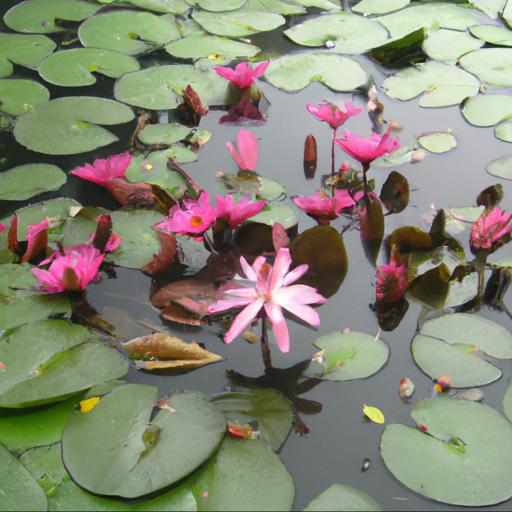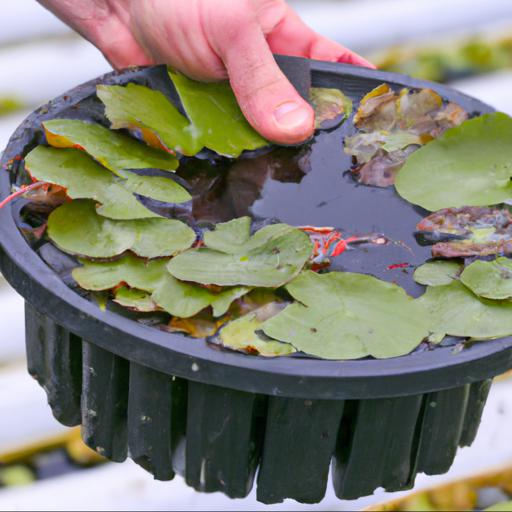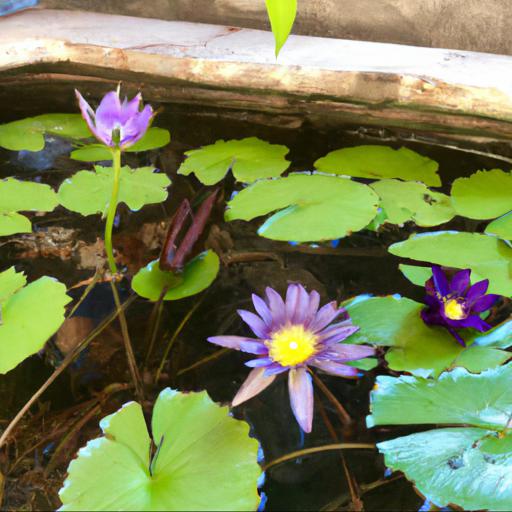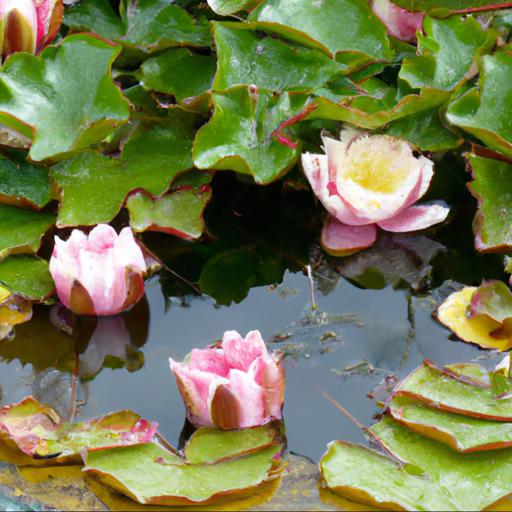Are you looking for tips to help you grow beautiful waterlilies in your garden? Waterlilies are a stunning addition to any pond or water feature, and with the right care and maintenance, they can thrive. In this blog, we will provide you with some essential tips for growing waterlilies, so you can enjoy their beauty and fragrance in your outdoor space.
We will cover topics such as the best place to plant your waterlilies, the best soil to use, and how to prune them for optimal growth. Whether you are a beginner or an experienced gardener, these tips will help you get the most out of your waterlilies.
Benefits of growing waterlilies

Growing waterlilies is a great way to add a gorgeous aesthetic to any pond or water feature. In addition to their beautiful blossoms and lush foliage, waterlilies provide several beneficial features.
For example, they act as natural filters, removing excess nutrients and debris that can lead to murky or foul-smelling water. As natural oxygenators, they also help ensure the health of fish and other aquatic life. Waterlilies also create shade and protective habitat for aquatic life, as well as habitats for beneficial insects and other animals.
Finally, they serve as a natural food source for water birds, turtles, and other creatures. Growing waterlilies is relatively easy – simply dig out an area of your pond, line it with soil or pebbles, then sink the waterlily tuber about four inches into the ground. Keep in mind that some varieties of lilies will need to be placed in shallow water, while others prefer deeper depths.
It’s best to start off with a small lagoon-type pond; not only is it easier to dig but also less likely to become clogged up with debris. The lilies should be planted in a sunny area, and once the flowers start to blossom, it’s important to tie the foliage and stems to stakes or canes to prevent them from being pulled out of the water.
When selecting a waterlily, look for healthy leaves and stems, and opt for varieties that will be appropriate for the depth of your pond. Research what kind of light the waterlilies will need in order to thrive, then place them in an appropriate location.
Remember to fertilize your waterlilies every two to three weeks and make sure there is plenty of fresh water circulating through the pond. If you’re looking to increase underwater planting, then consider planting compatible aquatic plants or adding pH-tolerant fish, such as mosono, sterlets, and whitefish. With thoughtful planning and proper care, you can be sure your waterlilies will flourish and provide beauty and abundance to your pond and garden.
Tips for planting waterlilies

. As a seasoned UK garden expert, I’m here to offer some tips on growing waterlilies.
Waterlilies are majestic garden plants that add a splash of color and tranquility to any water feature. Waterlilies are rooted plants that live in shallow water, with lily pads and yellow-tinged flowers floating atop the water. They come in over 50 varieties, and although they flower and look beautiful, the plant roots and pads also provide a natural filter for ponds and lakes, keeping water clean and oxygenated.
When it comes to planting waterlilies, the most important thing you need is a spot with enough sunlight, fresh water and plenty of room for them to grow. Waterlillies need about 6-8 hours of direct sunlight, which is why it’s a good idea to site them near the top of perimeters of your pond. Also, the stronger and deeper your pond or lake is, the better.
You’re looking for a depth of at least 24”, as this will give your waterlilies enough water to thrive and lots of nutrients. Now it’s time to plant the lilies.
Many nurseries sell young waterlilies in their own individual pots. Plant them in buckets with a bit of compost and soil and then slowly fill the buckets with pond water, allowing the lillies to acclimatize to their new environment. When you’re ready, carefully transfer them to their new home in the pond, making sure they are planted in an area with plenty of soil.
Depending on the variety you have chosen, you can expect your lilies to be in full bloom within weeks or months of planting. If you follow these tips, your waterlilies should look at home in no time.
Remember to place them in areas with plenty of sunlight and water, and enjoy the fluttering of a thousand petals. With minimal to no fuss, you can turn your pond into a magical water garden haven.
Tips for caring for waterlilies

As a UK gardening expert, I have gathered some tips for growing waterlilies that will be sure to bring plentiful blooms this summer. Waterlilies are easy to care for and make a beautiful addition to any garden, pond or other aquatic environment.
One of the most important tips for growing waterlilies is to ensure they get plenty of direct sunlight. They need at least four to six hours of sun a day to produce beautiful blooms. If they are planted in a shaded area, they may fail to bloom altogether.
Additionally, you should look for a spot with strong circulation patterns, such as near a waterfall or fountain, as this will help keep the water clean and free of algae and other aquatic plants. Waterlilies also need plenty of water, so make sure to check the soil or water levels often to ensure the plant is properly hydrated. Additionally, fertilize the water with a granular aquatic fertilizer once every month.
This will help promote healthy foliage and blooms. You can also use compatible waterlily fertilizer tablets placed near the root ball for additional benefit.
Finally, if necessary you can gently prune the waterlily to control its size and shape. With proper care and attention, your waterlilies should produce plentiful blooms this summer. Remember, these tips are a general guide and, depending on the plant and its environment, you may need to adjust these instructions.
Whatever you do, always ensure that the waterlilies get plenty of direct sunlight, water and fertilizer. With these basics taken care, you will be sure to enjoy beautiful blooms this season.
Troubleshooting common waterlily problems
As a UK garden expert, I am here to provide advice on how to successfully maintain your waterlilies and keep them looking healthy and beautiful in your outdoor pond. Waterlilies have many benefits; they help oxygenate ponds, provide shade for your fish, and look stunning in any body of water.
Unfortunately, many people have experienced difficulty with growing waterlilies which can lead to disappointment. The most common problem associated with waterlilies is the lack of lily pads on the pond surface. This can be the result of either too much sunlight or a variety of environmental factors.
Firstly, check if your pond is in direct sunlight, if so, you should consider providing some shade. Adding a floating lily pad to your pond as well as limiting the number of hours of direct sunlight onto the water could help your waterlilies to thrive. In addition to this, poor water quality can be a contributing factor to a lack of lily pads.
To avoid this issue, consider installing a pond filter which will help to keep the water clean and clear. Furthermore, it is important to regularly check the water pH to make sure the level values stay between
5 and 0.
With regard to the nutrient levels of the pond, you could use an algae-control product to prevent nutrient overload. Strong winds and reduced water supply are also things to look out for as they can have an adverse effect on your waterlilies. Overall, with some careful tending and regular maintenance, you can ensure that your waterlilies remain healthy and beautiful.
Conclusion
Waterlilies are beautiful aquatic plants that can be grown in ponds and water features. To ensure success, make sure you plant them in a shallow area with plenty of sunlight and nutrient-rich soil. Waterlilies should be fertilized regularly and their leaves should be trimmed to promote healthy growth.
Additionally, make sure to change the water regularly and keep the area free of debris. With the right care and attention, waterlilies will bloom and bring a touch of beauty to any garden.
FAQ
What type of soil is best for growing waterlilies?
Loamy soil with a neutral pH is the best type of soil for growing waterlilies.
How often should waterlilies be fertilized?
Waterlilies should be fertilized every two weeks during the growing season.
What is the best way to propagate waterlilies?
The best way to propagate waterlilies is by dividing the rhizomes. This can be done in the spring or fall when the plant is dormant. The rhizomes should be divided into sections with at least one bud and one growing point. The divided rhizomes should then be planted in large containers filled with aquatic soil and placed in a pond or other body of water.
How much sunlight do waterlilies need?
Waterlilies need at least 6 hours of direct sunlight per day.
How deep should the water be for growing waterlilies?
The water should be at least 12 inches deep for growing waterlilies.
What are the best methods for controlling waterlily pests?
The best methods for controlling waterlily pests include using physical barriers such as floating row covers, hand-picking, and introducing beneficial insects such as ladybugs and lacewings. Additionally, chemical treatments such as insecticidal soaps and neem oil can be used to control some pests.

